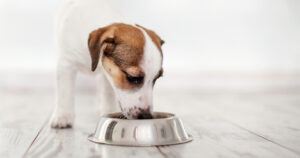Chicken hearts are nutritious organ meats that provide dogs with essential proteins, vitamins and minerals. Many dog owners wonder if it’s safe and healthy to feed their dog raw chicken hearts.

While raw feeding has gained popularity among some dog owners, others raise concerns about the safety of raw meat and the risk of foodborne pathogens.
Overview of Chicken Hearts
Chicken hearts are the muscular organ that pumps blood throughout the chicken’s body. Along with the gizzard, liver and kidneys, chicken hearts are considered an organ meat or offal.
Chicken hearts are an excellent source of essential proteins, minerals and vitamins. Some of the nutrients found in chicken hearts include:
- Protein – Chicken hearts are packed with high-quality protein needed for maintenance, growth and repair of muscles and tissues.
- Iron – Chicken hearts provide heme iron, the most easily absorbed form of iron that helps transport oxygen in the blood.
- Zinc and copper – These minerals support immune function and wound healing.
- Vitamin A – Important for vision, bone growth and immune function.
- B vitamins – Aid in metabolism, nerve function and energy production.
- Taurine – An amino acid that supports heart health.
Chicken hearts are naturally high in cholesterol but the amount consumed in moderation generally isn’t a concern for healthy dogs.
Are Raw Chicken Hearts Safe for Dogs?
Feeding any raw meat to dogs comes with some degree of risk. Raw chicken may harbor harmful bacteria including salmonella and campylobacter. When ingested, these bacteria can lead to vomiting, diarrhea and other symptoms of food poisoning.
Dogs have a shorter digestive tract compared to humans which means bacteria have less time to proliferate before being expelled. Healthy dogs are also less susceptible to foodborne pathogens than humans. However, dogs with compromised immune systems are at higher risk of illness.
To reduce the risk of bacteria, only feed dogs raw chicken from reputable suppliers that follow proper handling and storage procedures. Raw diets should be prepared safely by washing hands, utensils and surfaces after handling.
Cooked chicken hearts eliminate the risk of foodborne illness and may be a safer option than raw. Lightly cooked chicken maintains much of the nutritional value. However, don’t feed dogs cooked chicken bones as they can splinter and cause harm.
If choosing to feed raw, monitor your dog closely for any vomiting, diarrhea, lethargy or other signs of distress after eating. Stop raw feeding and contact your veterinarian if these symptoms occur.
Potential Benefits of Raw Chicken Hearts
Proponents of raw feeding claim it provides the following benefits:
More Natural and Species-Appropriate Diet
Dogs descended from wolves and are anatomically adapted to eat raw meat, bones and organ meats. Feeding a species-appropriate raw diet is believed to align better with a dog’s nutritional needs.
Improved Digestibility
Cooking proteins denatures them, altering their molecular structure. Some dogs may have difficulty digesting cooked proteins. Raw organ meats contain natural enzymes that may aid digestion.
Healthier Skin and Coat
The natural oils, enzymes and amino acids in raw chicken hearts can lead to improvements in skin and coat condition. Essential fatty acids also support skin and coat health.
Dental Health
The act of chewing raw meat and bones is thought to help clean teeth and exercise gums. Dental health may decline in dogs fed only soft commercial food.
Lean Muscle Maintenance
Raw feeding proponents believe a natural raw diet buffers wild fluctuations in blood sugar levels, maintaining energy and lean muscle mass.
However, published research on the proposed benefits of raw diets is limited. Owners should monitor their individual dog and adjust the diet according to results.
Potential Risks of Feeding Raw Chicken Hearts
Aside from bacterial contamination, some potential risks of feeding raw chicken hearts include:
Nutritional Imbalances
Formulating a complete and balanced raw diet requires careful calculation to ensure adequate nutrients. Chicken hearts should not exceed more than 10% of an adult dog’s diet. Excess organ meat can lead to toxicity.
Bone Injuries
Raw chicken bones become brittle once cooked and should always be fed raw. However, some raw bones may still splinter and cause injuries or obstructions in the throat, stomach or intestines.
Vitamin A Toxicity
Excessive vitamin A from organ meats like chicken hearts can cause bone distortions, joint swelling and lameness in growing puppies. Adult dogs are less susceptible but vitamin A should not exceed safe limits.
Heavy Metal Exposure
Trace amounts of heavy metals may be present in organ meats and accumulate over time with raw feeding. Only feed raw chicken from trusted suppliers.
To minimize risks, consult with a veterinary nutritionist when formulating a raw diet. Never transition your dog to a raw diet abruptly – gradually mix raw food with the regular diet.
Monitor your dog closely and discontinue raw chicken hearts if any adverse effects occur.
Feeding Guidelines for Raw Chicken Hearts
Follow these tips for safely incorporating raw chicken hearts into your dog’s diet:
- Raw chicken hearts should make up no more than 10% of an adult dog’s diet. For growing puppies, reduce to less than 5% due to vitamin A concerns.
- When transitioning to raw chicken hearts, start with small amounts like 1-2 hearts 2-3 times per week.
- Evaluate your dog’s reaction over a period of a few weeks before increasing portion sizes or frequency.
- Feed hearts from organic, free-range chicken whenever possible to reduce contamination risk. Avoid non-organic chicken.
- Wash hands thoroughly before and after handling raw chicken. Follow food safety guidelines to avoid cross-contamination.
- If also feeding edible raw chicken bones, introduce slowly to reduce chances of constipation or obstruction.
- For puppies, limit calcium-rich foods like raw bones to prevent developmental issues.
- Don’t rely solely on chicken hearts to meet nutritional requirements. Feed as part of a balanced raw or cooked diet.
Monitor stool consistency when first feeding. Loose stools may indicate too much organ meat or a food sensitivity. Seek veterinary advice if diarrhea persists beyond 24-48 hours.
Are There Any Alternatives to Raw Chicken Hearts?
If uncomfortable with the risks of raw chicken, there are alternatives to provide your dog with the nutritional benefits of chicken hearts:
- Lightly cooked chicken hearts – Quickly sear or boil chicken hearts to kill any surface bacteria while preserving nutrients. Cooked chicken bones should always be avoided.
- Dehydrated chicken hearts – Dehydration creates a shelf-stable treat while preserving many nutrients. Most dehydrated chicken is air-dried at low temperatures.
- Canned chicken hearts – Canning involves cooking chicken hearts which reduces bacterial risk. Look for products packed in water without additives or preservatives.
- Other raw organ meats – Beef, lamb or duck hearts can be fed as alternatives. Follow the same raw feeding guidelines.
- Omega-3 rich foods – If concerned about nutrient loss from cooking, supplement your dog’s diet with omega-3s from fish, fish oil or algae.
When sourcing any raw meat, always go through reputable suppliers to ensure proper quality control. Cooked alternatives reduce exposure to pathogens.
How Much to Feed Dogs
The amount of chicken hearts to feed depends on your dog’s size, age and activity level. Use these rough guidelines for integrating chicken hearts into your dog’s existing diet:
Based on Dog’s Weight
- Small dogs (<20 lbs): 1-2 chicken hearts 2-3 times per week
- Medium dogs (21-50 lbs): 3-4 chicken hearts 2-3 times per week
- Large dogs (>50 lbs): 5-6 chicken hearts 2-3 times per week
Based on Dog’s Age
- Puppies (<6 months): Not recommended due to vitamin A concerns
- Adult dogs: Follow weight guidelines above
- Senior dogs (>7 years): Reduce portion sizes slightly
Very active dogs that require more calories may tolerate slightly larger servings of chicken hearts. Reduce portion sizes for less active or overweight dogs.
If concerned about proper ratios when calculating raw diets, consult with a canine nutritionist. Home-prepared diets must provide complete and balanced nutrition.
Potential Health Concerns
Dogs with the following conditions may require special precautions or restrictions when eating raw chicken hearts:
- Compromised immune system – Higher risk of illness from bacteria
- Liver or kidney disease – May have difficulty processing excess vitamin A
- Pancreatitis – Increased fat from chicken hearts can trigger inflammation
- Food allergies – Allergies to chicken protein are possible
- Growing puppies – More prone to developmental issues from excesses or imbalances
Always discuss any diet changes, including adding raw chicken hearts, with your veterinarian – especially if your dog has a medical condition. They can help determine appropriate adjustments to your dog’s diet.
Can Puppies Eat Raw Chicken Hearts?
Most experts caution against feeding raw chicken hearts or any raw meat to puppies under 6 months. Their developing digestive and immune systems are vulnerable to foodborne bacteria.
Puppies also require very precise calcium to phosphorus ratios for proper bone growth. The high calcium content in raw bones may disrupt these ratios.
Veterinarians typically recommend waiting until 6 months to introduce raw feeding under close supervision. Until then, cooked chicken hearts are safer if fed occasionally and in small amounts.
With puppies, monitor stool consistency closely after introducing new foods. Diarrhea or constipation signal an issue. Seek veterinary guidance at the first sign of trouble.
FAQs
How many raw chicken hearts should I feed my dog?
Feed 1-2 hearts for small dogs, 3-4 for medium dogs, and 5-6 for large dogs. Limit to 2-3 times per week. Reduce servings for puppies or senior dogs. Very active dogs can handle slightly more.
Is it OK if my dog eats a raw chicken heart daily?
Feeding raw chicken hearts daily is not recommended. Limit portions to 2-3 times per week to avoid nutritional imbalances or excesses. Rotate with other protein sources for variety.
Can I freeze raw chicken hearts for dogs?
Yes, freeze raw chicken hearts in an airtight container for 1-2 months until ready to feed. Thaw in the refrigerator before feeding. Freezing may kill some surface bacteria but does not eliminate all food safety risks with raw meat.
Will my dog get sick from eating raw chicken hearts?
Healthy dogs are less prone to foodborne illness than humans. But dogs with compromised immunity are at higher risk. Monitor for vomiting, diarrhea or lethargy after introducing raw chicken hearts. Discontinue use if these symptoms develop.
Should I wash raw chicken hearts before feeding?
Washing chicken hearts under running water can help remove some surface bacteria. However, pathogens may still be present even after washing. Proper handling and cautious introduction of raw foods is important either way.
Conclusion
Chicken hearts provide dogs with dense nutrition in the form of essential proteins, vitamins and minerals. Feeding dogs raw chicken hearts can be done safely if proper precautions are followed. However, there are always risks of pathogenic bacteria exposure or nutritional excesses.
Lightly cooked chicken hearts offer a lower-risk alternative while retaining nutrients. When feeding any raw meat, monitor your dog closely and don’t exceed recommended serving sizes.







